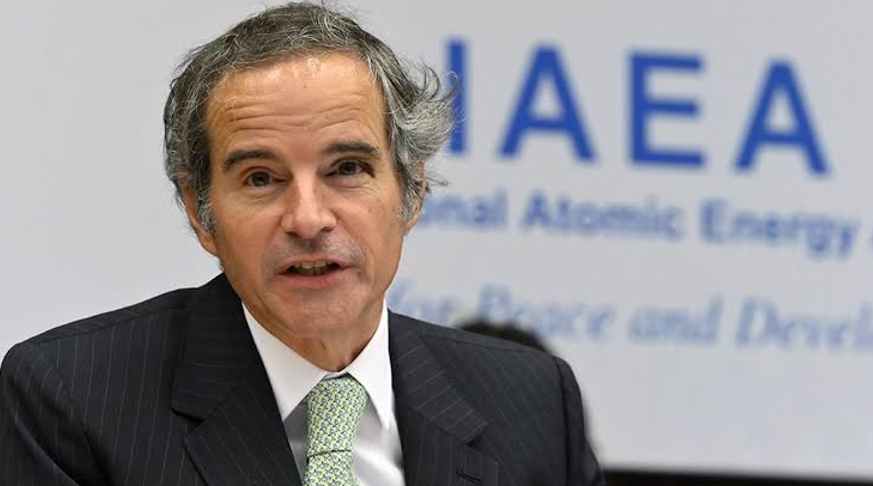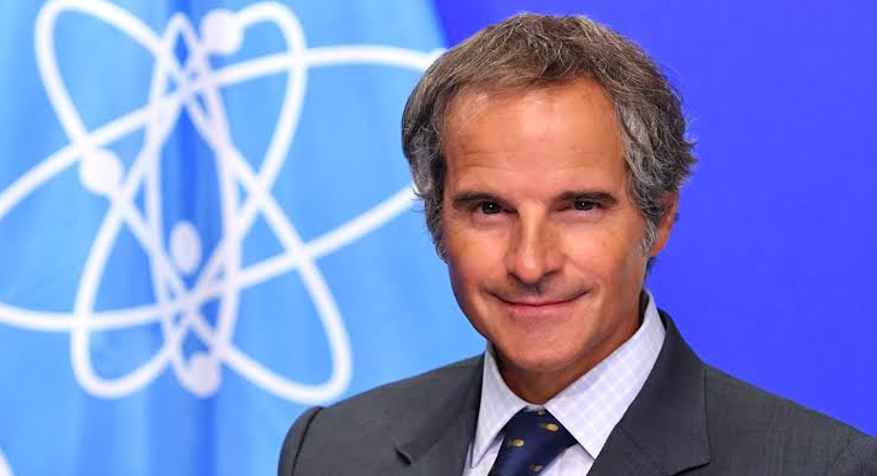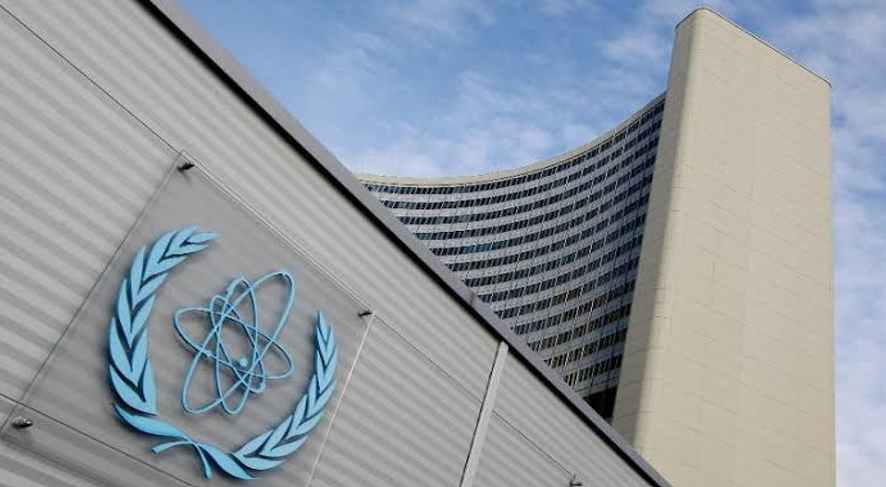
Introduction
- International Atomic Energy Agency is an organization which is based in Vienna but works as an international organization by its true nature and works. It is an organization that promotes a sense of consciousness among the countries and also promotes peaceful use of nuclear energy, it prevents the use of nuclear energy for any military affairs. It is an autonomous body working since 29th July 1957. It is an intergovernmental forum used for scientific as well as technical purposes. It reports or informs the United Nations General Assembly and Security Council on important matters because of their international treaty terms. It develops the peaceful applications of nuclear energy and provides security and safeguards against the misuse of nuclear technology and materials. It promotes nuclear safety and has its security standards to implement safety for all. It proposed to improve regulatory oversight and aging management.
Member Countries Of The International Atomic Energy Agency
- Member states or member countries are those countries that have the common zeal to promote the consciousness about not those nuclear energy for any military purposes. The member states have a common interest as the International Atomic Energy Agency. In the year 1957, the organization’s work started to progress in 1956 the foundation of the organization was done. Name of the member states are as follows:-
| Afghanistan |
| Albania |
| Algeria |
| Angola |
| Antigua and Barbuda |
| Argentina |
| Armenia |
| Australia |
| Austria |
| Azerbaijan |
| Bahamas |
| Bahrain |
| Bangladesh |
| Barbados |
| Belarus |
| Belgium |
| Belize |
| Benin |
| Bolivia |
| Bosnia-Herzegovina |
| Botswana |
| Brazil |
| Brunei |
| Bulgaria |
| Burkina Faso |
| Burundi |
| Cambodia |
| Cameron |
| Canada |
| The Central African Republic |
| Chad |
| Chile |
| China |
| Colombia |
| Comoros |
| Republic of the Congo |
| Costa Rica |
| Cote d’Ivoire |
| Croatia |
| Cuba |
| Cyprus |
| Czech Republic |
| The Democratic Republic of the Congo |
| Denmark |
| Djibouti |
| Dominica |
| Dominican Republic |
| Ecuador |
| Egypt |
| El Salvador |
| Eritrea |
| Estonia |
| Eswatini |
| Ethiopia |
| Fiji |
| Finland |
| France |
| Gabon |
| Georgia |
| Germany |
| Ghana |
| Greece |
| Grenada |
| Guatemala |
| Guyana |
| Haiti |
| Holy See |
| Honduras |
| Hungary |
| Iceland |
| India |
| Indonesia |
| Iran |
| Iraq |
| Ireland |
| Israel |
| Italy |
| Jamaica |
| Japan |
| Jordan |
| Kazakhstan |
| Kenya |
| South Korea |
| Kuwait |
| Kyrgyzstan |
| Yemen |
| Laos |
| Latvia |
| Lebanon |
| Lesotho |
| Liberia |
| Libya |
| Liechtenstein |
| Lithuania |
| Luxembourg |
| Madagascar |
| Malawi |
| Malaysia |
| Mali |
| Malta |
| Marshall Islands |
| Mauritania |
| Mauritius |
| Mexico |
| Moldova |
| Monaco |
| Mongolia |
| Montenegro |
| Morocco |
| Mozambique |
| Myanmar |
| Namibia |
| Nepal |
| Netherlands |
| New Zealand |
| Nicaragua |
| Niger |
| Nigeria |
| North Macedonia |
| Norway |
| Oman |
| Pakistan |
| Palau |
| Panama |
| Papua New Guinea |
| Paraguay |
| Peru |
| Philippines |
| Poland |
| Portugal |
| Qatar |
| Romania |
| Russia |
| Rwanda |
| Saint Kitts and Nevis |
| Saint Vincent and Grenadines |
| Saint Lucia Samoa |
| San Marino |
| Saudi Arabia |
| Senegal |
| Serbia |
| Seychelles |
| Sierra Leone |
| Singapore |
| Slovakia |
| South Africa |
| Spain |
| Sri Lanka |
| Sudan |
| Sweden |
| Switzerland |
| Syria |
| Tajikistan |
| Tanzania |
| Thailand |
| Togo |
| Trinidad and Tobago |
| Tunisia |
| Turkey |
| Turkmenistan |
| Uganda |
| Ukraine |
| United Arab Emirates |
| United Kingdom |
| United States of America |
| Uruguay |
| Uzbekistan |
| Vanuatu |
| Venezuela |
| Vietnam |
| Zambia |
| Zimbabwe |
Purpose Of IAEA

The IAEA and its member states promote social and economic goals, such as how to use nuclear energy which can benefit all and ha none, such peaceful purposes to use nuclear technology and science are including the generation of electricity and transfer of such technology and knowledge in a sustainable manner to developing member states.
It develops nuclear safety standards and promotes the achievement and maintenance of high levels of safety in applications of nuclear energy protection of human health and the environment against ionizing radiation.
It verifies through its inspection system that states comply with their commitment under the non-proliferation agreements to use nuclear material and facilitates only for peaceful purposes.
The IAEA works with its 171 member states and multiple partners worldwide to promote safe, secure nuclear energy. Through technical cooperation programs, it shares technical knowledge with its member states.
Its chief areas of work are safety and security, science and technology, and safeguards and verification.
History Of IAEA
- The IAEA was created in 1957 as the fear triggered among some people that nuclear technology can be used in such a way it can harm mankind, to promote safety, and security from nuclear science and technology and to uphold its advantages of it the organization was formed. The agency’s genesis was U.S President Dwight Elsenhower’s “atoms of peace” address to the General Assembly of the United Nations on December 8th, 1953. The U.S ratification of the statute by President Elsenhower, on 29th July 1957, marks the official birth of the international atomic energy agency. Early at the beginning of the foundation, it was given the said to work with its member states and multiple partners worldwide to promote safe, secure, and peaceful nuclear technology as well as towards sustainable development goals. It has two regional offices Located in Toronto, Canada, and Tokyo, Japan as well as two liaison offices in New York and a research lab in Seibersderf, Austria, and Monaco. Currently, it has 171 members. IAEA Director General Rafael Mariano Grossi joined the office on 3 December 2019. Mr. Grossi is a diplomat with over 35 years of experience in the field of non-proliferation and disarmament.
Structure Of IAEA
- The IAEA is the international body of 2560 multidisciplinary professionals and support staff from more than 100 countries. They come from different backgrounds but work for the same motive as the organization’s ideology said they include various scientific, technical, managerial, and professional disciplines. The organization framework of the IAEA comprises six major departments:-
- Management
- Nuclear sciences and application
- Nuclear energy
- Nuclear safety and security
- Technical cooperation and safeguards
- The work of staff in these departments is not similar to each other here one can find various kinds of jobs benefitting mankind such as Safeguards inspectors and analysts who check and verify the details of sensitive nuclear material. Technical officers run different kinds of projects which help countries bring fresh water to cities and richer harvests to farmer fields. Nuclear experts’ radiation specialists and engineers are also appointed. The three organs of the IAEA are the general conference, the board of governors, and the secretariat headed by a Director General. The general conference elects 22 of the 35 members of the Board of Governors for the period of two years. The general conference discusses any matter concerning the IAEA and may make recommendations to the Board of Governors or any of the member states. There are 35 members who carry out the work. The board meets five times each year. It consists of 13 members most advanced in the technology of atomic energy and the production of source material, the member of most advanced in the technology. The staff of the IAEA is headed by a Director General appointed by the Board of Governors with the approval of the General Conference for the term of four years. IAEA has a staff of inspectors to report violations. In case of non-compliance, the agency’s Board of Governors reports to the security council and the General Assembly of the UN. The annual general conference usually takes place in September. The 64th general conference of IAEA in Vienna from September 21st to 25th 2020. It examines and makes recommendations to the IAEA’S general conference on the organization’s program, financial statements, and budget. The board considers membership applications, approves safeguards agreements, and publication safety standards. India is a founding member of the IAEA. In 2019 India has put down 26 reactors under IAEA safeguards.
Argentina |
China |
Ghana |
Kuwait |
Nigeria |
Poland |
Sweden |
Australia |
Egypt |
Greece |
Malaysia |
Norway |
Russia |
Switzerland |
Austria |
Estonia |
Hungary |
Mexico |
Panama |
Saudi Arabia |
UAE |
Brazil |
France |
India |
Mongolia |
Paraguay |
Senegal |
UK |
Canada |
Germany |
Japan |
New Zealand |
Peru |
South Africa |
USA |
Budget

- The agency’s main sources of funding are the Regular Budget Fund, the technical Cooperation Fund, and Extra budgetary Program Funds. These are mainly supplied by member states and in some cases by other donors. The IAEA carried out its work in two main areas one of that is the regular program. These two programs are financed from separate funds. They also have an extra-budgetary contribution from member states and non-member states donors. The regular budget consists of an operational and a capital component. The first component is used to finance ongoing operational costs, the capital components are for major infrastructure investments. The peaceful uses initiative was launched in 2010.
Employment
Those who are interested in the aims and works of the international atomic energy agency can apply online and on their official website weeks before a vacancy the upload the notice for different positions. General application submitted for administrative, scientific, and internship posts.
All applicants must complete and apply by using the online job application form. Internal and external candidates must apply online. The application must only be submitted online. At this stage, there is no need to attach copies of qualifications, previous employment contracts, or entire publications. All application material should be typewritten and should be in English.
The Non-Proliferation Treaty With Iaea’s Grossi Calls For Recommitment

- The treaty on the Non-proliferation of nuclear weapons will take place from 1 to 26 August 2022 in New York. Every five years it reviewed since it came into force in 1970. The NPT is a treaty that prevents the spread of nuclear weapons and weapons technology to promote cooperation in the peaceful uses of nuclear energy. The goal of nuclear disarmament and general and complete disarmament. Many leaders from around the world would join the conference and it is of great importance for many countries. Mr. Grossi spoke about the global threats to international security, the growing role of low carbon nuclear power is expected to play a major role in meeting the world’s energy and climate needs, the threats to nuclear safety in the war in Ukraine and the use of nuclear technologies for peaceful purposes globally. The IAEA works for mankind and it promotes the use of nuclear technology for peaceful purposes, health, food security, and environmental protection.
IAEA Safeguards
- It sets the technical measures that allow the IAEA to independently verify a state’s legal commitment not to divert nuclear material from peaceful nuclear activities. These safeguards are based on an assessment of the correctness and completeness of a country’s declared nuclear materials and activities. The verification measures include visits and ongoing monitoring, on-site inspection, and evaluation.
IAEA And PRIS (Power Reactor And Information Systems)
- The power reactor and information systems developed and maintained by the IAEA for over five decades are a comprehensive database focusing on nuclear power plants worldwide. PRIS contains information on power reactors in operation, under construction, or those being decommissioned.
IAEA And FAO
- The joint center advances and supports the safe and appropriate use by FAO and IAEA member states of nuclear and related technologies in food and agriculture, aiming to contribute to global food security and sustainable agricultural development worldwide. It does so through adaptive research and development at its laboratory as well as through annual support and coordination.
IAEA And G20
- Nuclear power in the clean energy transition was showcased by G20 as IAEA’S Director General Rafael Mariona Grossi and other experts joined representatives from Indonesia holder of the G20 presidency as well as south Korea and UAE to discuss the role of nuclear technology in the achievement of net zero and sustainable development goals.
IAEA Fellowship Program
- Women from all over the world studying nuclear-related subjects are encouraged to apply and the fellowship should be awarded to 250 selected students this year. It aims to increase the number of women in the nuclear field, supporting an inclusive workforce of both men and women, who contributed to the field. This fellowship program is named after pioneer physicist and twice Nobel prize laureate Maria Sklodowska Curie.
IAEA And Young Nuclear Professionals
- Young Nuclear professionals receive training and mentoring at the international nuclear institute it follows more than a month of hands-on training, technical site visits, and theoretical lectures spread awareness across the two continents, 21 young professionals are selected from 15 countries, who expertise in nuclear power management, now been certified by International Nuclear Industry. The annual four-week program of INI brings together a diverse student body supported through the IAEA technology cooperation program.
Top 13 Interesting Facts About IAEA
Director General of IAEA Mohamed ElBaradei got the Nobel prize in 2005.
Saint Kitts and Nevis became the new IAEA member in 2022.
Under the joint comprehensive plan of action signed between Iran and other major powers of the world including the United States, Iran agreed to obey the regulation about nuclear facilities and welcomed international inspection by IAEA on November 11, 2013.
Soon after the Chornobyl accident, IAEA provides immediate assistance to the Soviet Union in the area of environmental remediation, decommissioning, and management of radioactive waste, to strengthen the safety level of the plant.
North Korea announced its withdrawal from NPT on January 10, 2003.
Libya announces that it will dismantle its WMD program in cooperation with the IAEA as well as the United States and the UK on December 19, 2003.
A 9.0 magnitude earthquake struck near the coast of Honshu, Japan, creating a massive tsunami. The tsunami knocks out the Fukushima Daiichi nuclear power plant cooling system. The core of the 3 reactors out of 6 are damaged by overheating later this situation was handled by IAEA.
IAEA is located in Vienna which stands as an intriguing field of study, not least as the agency’s creation was at a time of such geopolitical rivalry.
In 2011 Russian nuclear accident specialist loli Andreev was critical of the response to Fukushima and says that IAEA did not learn from the Chornobyl disaster.
Small modular reactors are advanced nuclear reactors that have a power capacity of up to 300 MW€ per unit, which can produce a large amount of low carbon electricity, they offer savings in cost and construction time, and are deployed incrementally to match increasing energy demand. The IAEA has established the platform on Smrs and their applications.
IAEA decommissioning many projects will the help of robots, drones as well as digital technology to dismantle the old nuclear facilities and assist countries in efforts to plan and implement decommissioning projects and develops related safety standards and nuclear energy series publication and other safety aspects, meeting with experts, operators, and authorities.
France operates 58 active nuclear reactors that generate 71% of the country’s total electricity and are the highest in the world. Its nuclear waste was recycled and reused as the old waste turned into mixed oxide fuel known as MOX which can be used to continue to power the nuclear plants. IAEA looks after the safety measures and security for each member state in the assembly.
India has become the 35th country to join the International Atomic Energy Agency (IAEA) Response and Assistance Network (RANET), a group of states which will help in situations of nuclear or radiological emergencies.






